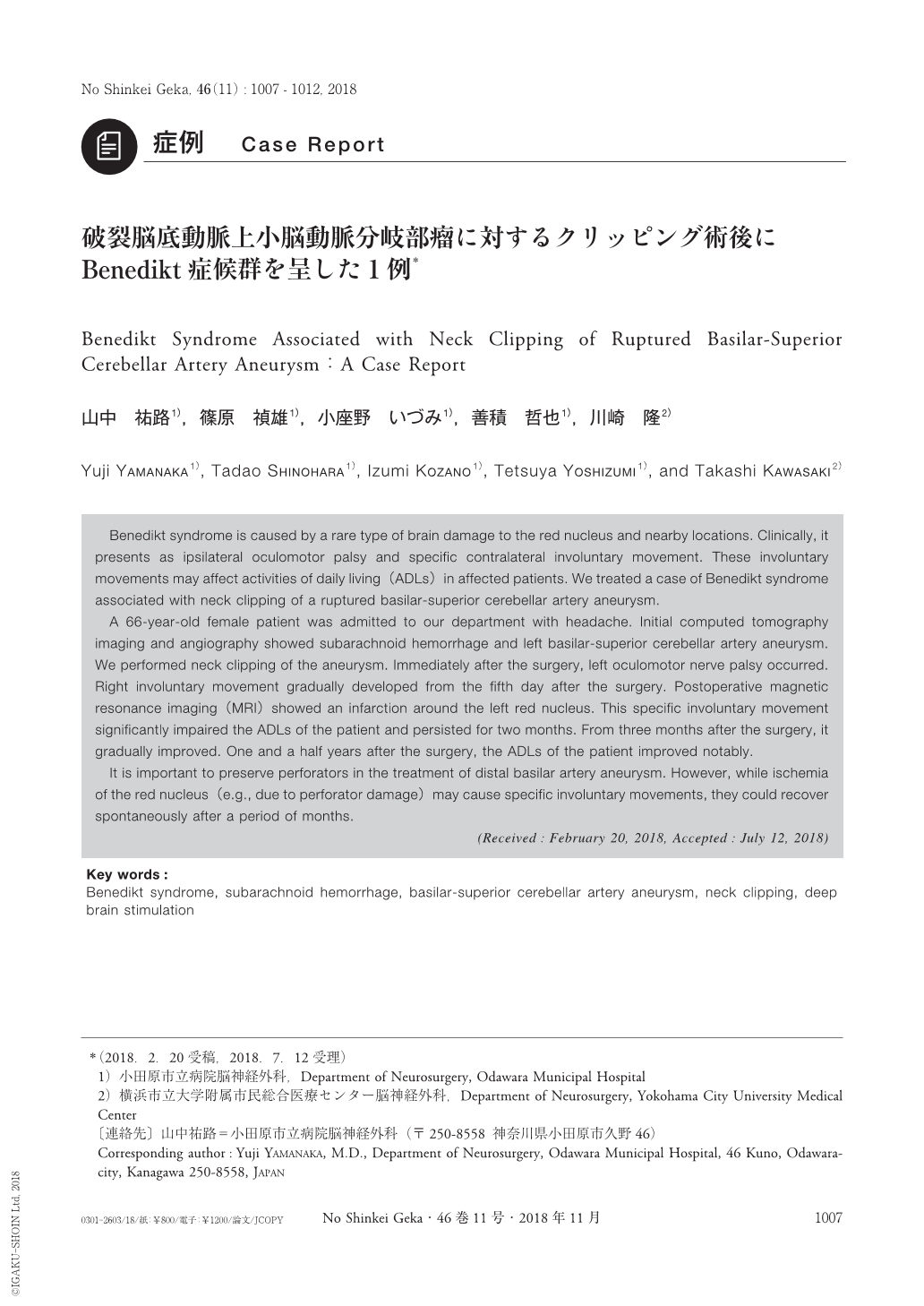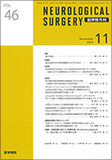Japanese
English
- 有料閲覧
- Abstract 文献概要
- 1ページ目 Look Inside
- 参考文献 Reference
Ⅰ.はじめに
Benedikt症候群は,一側の中脳赤核近傍の病変により同側の動眼神経麻痺と対側の特徴的な不随意運動を呈する稀な病態である5-7).今回われわれは,くも膜下出血(subarachnoid hemorrhage:SAH)で発症した破裂脳底動脈上小脳動脈分岐部瘤に対するクリッピング術後にBenedikt症候群を呈し,その後自然軽快した症例を経験したので,若干の文献的考察を加えて報告する.
Benedikt syndrome is caused by a rare type of brain damage to the red nucleus and nearby locations. Clinically, it presents as ipsilateral oculomotor palsy and specific contralateral involuntary movement. These involuntary movements may affect activities of daily living(ADLs)in affected patients. We treated a case of Benedikt syndrome associated with neck clipping of a ruptured basilar-superior cerebellar artery aneurysm.
A 66-year-old female patient was admitted to our department with headache. Initial computed tomography imaging and angiography showed subarachnoid hemorrhage and left basilar-superior cerebellar artery aneurysm. We performed neck clipping of the aneurysm. Immediately after the surgery, left oculomotor nerve palsy occurred. Right involuntary movement gradually developed from the fifth day after the surgery. Postoperative magnetic resonance imaging(MRI)showed an infarction around the left red nucleus. This specific involuntary movement significantly impaired the ADLs of the patient and persisted for two months. From three months after the surgery, it gradually improved. One and a half years after the surgery, the ADLs of the patient improved notably.
It is important to preserve perforators in the treatment of distal basilar artery aneurysm. However, while ischemia of the red nucleus(e.g., due to perforator damage)may cause specific involuntary movements, they could recover spontaneously after a period of months.

Copyright © 2018, Igaku-Shoin Ltd. All rights reserved.


